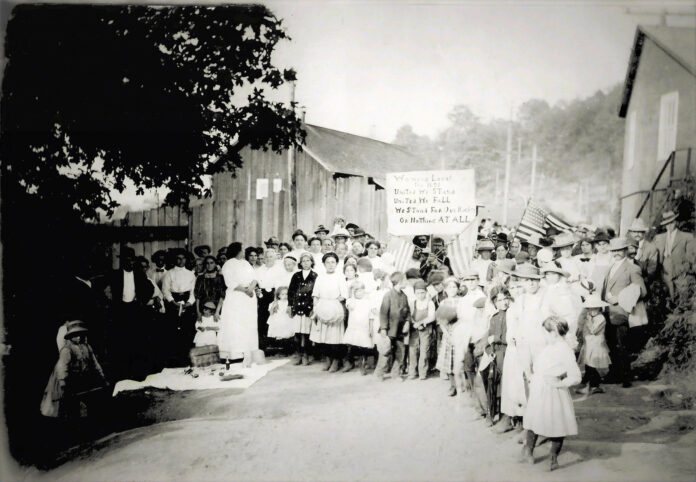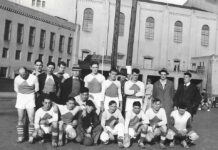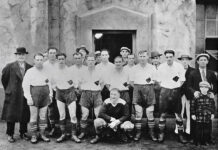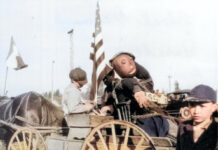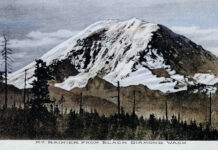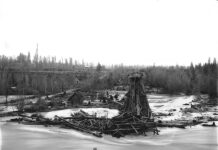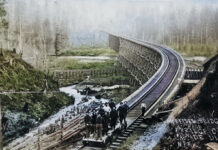With the approach of Labor Day, we turn our attention to an 18-month strike between 1912 and 1914 when Renton coal miners pressed for recognition of the United Mine Workers union by the Seattle Electric Company, which owned the mine and burned its coal to generate electricity. In this circa 1912 photo, the miners’ wives and children assembled near the portal to the mine.
The girl in the right foreground with a hand on her hip is Lena (Tamborini) Roberts, the sister of Carrie (Tamborini) Greeley who later recalled, “Even the families went on the picket line. The strike breakers (scabs) were brought in on the Interurban, usually at night. So the logical picketing was at the Interurban stop at the adit to the Renton Coal Mine property.” The slogan on the large sign carried by the striking protesters read, “United We Stand ~ United we fall ~ We stand for our rights or nothing at all.”
The Interurban was a passenger train operated by Puget Sound Electric Railway over 38 miles of track between Tacoma and Seattle, with 17 stops on the line, including Renton. The railway was also a subsidiary of Seattle Electric, providing the strike supporters with additional motivation to disrupt the mine owner’s related passenger rail business.
Coal was first discovered in 1853 near Renton, Washington by Dr. M. Bigelow while clearing land on his donation claim on the Black River. In 1860, David Mowery found another coal seam, soon after he and L.B. Andrews had organized the Issaquah Coal Company. Mowery didn’t think much of his claim and sold it to Robert Abrams.
Renton coal was forgotten for another dozen years until E.M. Smithers discovered a seam on his adjoining tract. The following year, 1873 the Renton Coal Company was organized by C.D. Shattuck, a California capitalist, T.B. Morris, and Smithers. By 1874, the Renton mine began shipping coal after two miles of railroad were constructed to the Black River where the output was loaded on barges and traveled down the Duwamish River to Seattle. About 1886, the mine closed due to a labor dispute and did not re-open until 1895.
That year the Renton Co-operative Coal Company took over the property utilizing an innovative system where the miners were also owners. Under the cooperative method, each miner was paid according to what he produced. Each miner, worker, or manager, bought into the mine and worked his share. Miners were limited to loading four cars of coal a day. The miners set output quotas, working hours, and established their own safety rules. The resulting profits were distributed among the miners and managers since they jointly owned the mine.
However in 1900, the Seattle Electric Co. assumed mine operations with plans to increase production and secure a cheap source of coal to power their coal-fired electric plant. Part of the motivation involved plans to build the afore-mentioned Seattle-Tacoma Interurban, and in 1901 formed the subsidiary, Puget Sound Electric Railway which began operating passenger rail service in 1902. The railroad ran for 26 years before competition from trucks, busses, and automobiles traveling on expanded road networks led to reduced ridership. The line shut down and the Interurban ran its last train on Dec. 30, 1928.
This photo #1976.031.0169 comes courtesy of the Renton Historical Museum with details about the strike from an article by Elizabeth Stewart that appeared in their Spring 2024 quarterly newsletter. The Renton Museum is located at 235 Mill Ave. South and open Tuesday – Saturday, 10 am to 4 pm.

